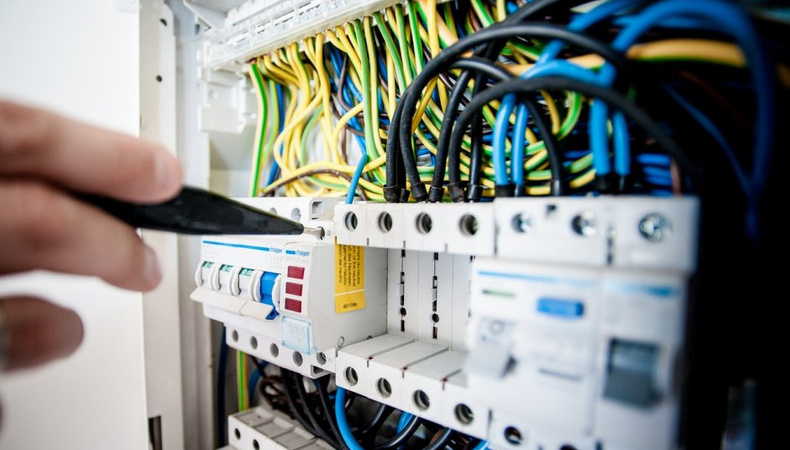Is 5G the Answer to Connectivity for Industrial IoT?
What is it good for?
Industrial connectivity use cases for 5G range from smart factories with real-time process automation, to wide-area connected products with lifecycle management. To address these different connectivity requirements, businesses currently have to deploy multiple networks. LAN technologies such as Ethernet, Wi-Fi, Zigbee and Lora are used for in-building connectivity, while a combination of LAN and WAN solutions are used for connectivity between buildings and fibre, cellular and satellite handle remote assets.
Wired or wireless?
Existing wireless technologies do not provide the stringent low latency performance required for industrial automation, hence the heavy reliance on wired technologies for time-critical applications. But the deployment flexibility, reduced cost of manufacturing, installation and maintenance, and long-term reliability compared to wired connections, makes wireless technologies very attractive for industrial markets.
So far, cellular connectivity has typically been used only for those use cases that involve mobile assets, such as fleet management and asset tracking. Research by Analysis Mason suggests this is due to a combination of technical and commercial limitations of existing cellular networks. The current quality of connectivity is not sufficient for mission-critical applications, while the cost of the SIM business model presents a barrier to adoption and the public network model is not always considered suitable for an industrial setting.
Promises, promises
5G promises to address the performance-related issues as well as enabling entirely new use cases. The ability to connect and transfer data from up to 1 million sensors per km2, allowing continuous collection of data from vast numbers of sensors, will enable remote monitoring and predictive maintenance of manufacturing assets. Low latency together with edge cloud capabilities will underpin real-time processes such as collaborative robots for process automation, and high reliability will support mission-critical operations.
These can be delivered via private 5G networks, offering a level of control and security comparable to wired networks. However, the development of the 5G standard is not yet complete, with enhancements enabling ultra-reliable low latency communications (uRLCC) yet to arrive, as well as the upgrades to infrastructure needed to offer standalone 5G.

From power gen to remote surgery
The mMTC (Massive Machine Type Communication) and uRLLC capabilities sit at the core of 5G use cases in industry. Some industrial processes demand extremely tight KPIs for communications between controllers and devices. Use cases like power generation and distribution, process automation, motion control and communication between different controls rely heavily on low latency capability.
But there is a host of other use cases that need 5G. Take tactile communications such as remote surgery, health care monitoring, online gaming and synchronised remote music. Then there are autonomous vehicles, drones and robotic applications like sense-and-avoid, automated overtake, collaborative collision avoidance, HDVP (high-density vehicle platooning) and V2X (Vehicle to everything) communications. And high-density communications like smart wearables, connected stadiums and IoT are all other use cases that need 5G to deliver.
Payback
While the challenges are considerable, the potential added value of running industrial use cases on improved connectivity is substantial. A study by Barclays predicted a potential £2 billion increase in annual UK manufacturing revenues by 2025 as a result of 5G implementation. Another recent McKinsey study predicts improved connectivity in manufacturing and other advanced industries could result in $400-650 billion of global GDP impact by 2030.
But despite these predictions, progress towards implementing 5G has been hampered by several issues. With the technology still evolving and the value potential split across use cases in different domains, there are difficulties in justifying the business case and ROI. There are also cultural barriers, because successful 5G deployment in manufacturing relies on multiple players across an ecosystem, from manufacturing engineers to telecoms providers who need to engage and cooperate. There are also concerns around security and ownership of data, as well as compatibility and interoperability with existing systems.
First in the game
There has been a tug of war between mobile network operators across the world to be the first in launching 5G networks. Oreedo, the Qatari mobile operator, was announced as the first 5G network mainly using eMBB capabilities for FWA and demonstrated the use of low altitude drone with 5G. Telecom Italia announced San Marino to be the first European state to provide state wide 5G coverage, bringing together eMBB and mMTC capabilities in the mmWave band. Vodacom group launched Africa’s first 5G capability in the 3.5GHz band for FWA access. Interestingly the South Korean government forced the main three mobile operators -SK Telecom, KT and LG to launch 5G at the same time. China mobile, China Telecom, NTT Docomo, Kddi and Telstra in Asia, were also the first to do mass 5g trails in different cities. Verizon, AT&T, Sprint and T-mobile in USA deployed 5G networks in different bands targeting varied market sectors. Vodafone , Telefonica, Orange and Three mobile have deployed their 5G networks in Europe and there is a lot of emphasis on private 5G networks. It’s a busy marketplace, but there is a difference between launch and full deployment.
Be in it to win it
5G has the potential to offer a strong foundation for IIoT technology and to play a key role in driving the future of Industry 4.0. In time, it may even become the standard wireless technology of choice for industrial connectivity. Although the technology is still evolving, for businesses to stay competitive it is essential that they explore the new possibilities presented by 5G. In addition, to steer future development and ensure that their specific industry needs are met, it is increasingly important that they engage and collaborate across the 5G value chain.
For more information or to discuss anything mentioned in this blog further, please contact Shahzad at [email protected]
For any general enquiries please email [email protected]
